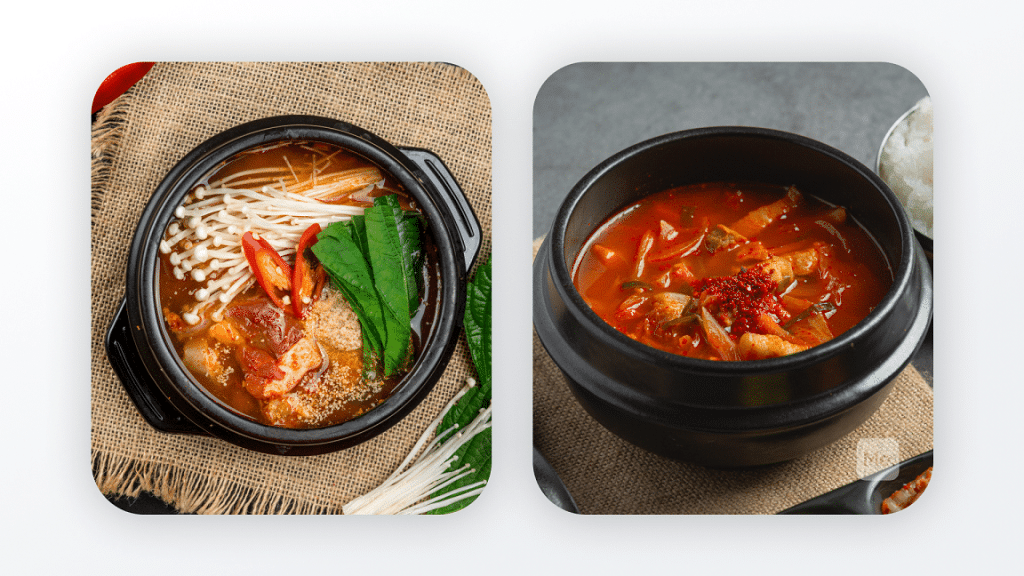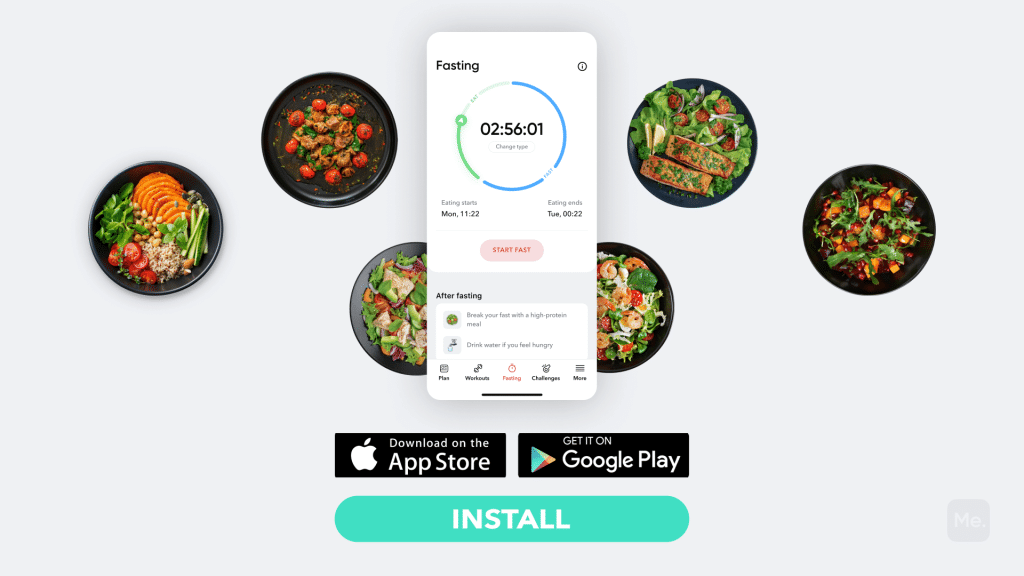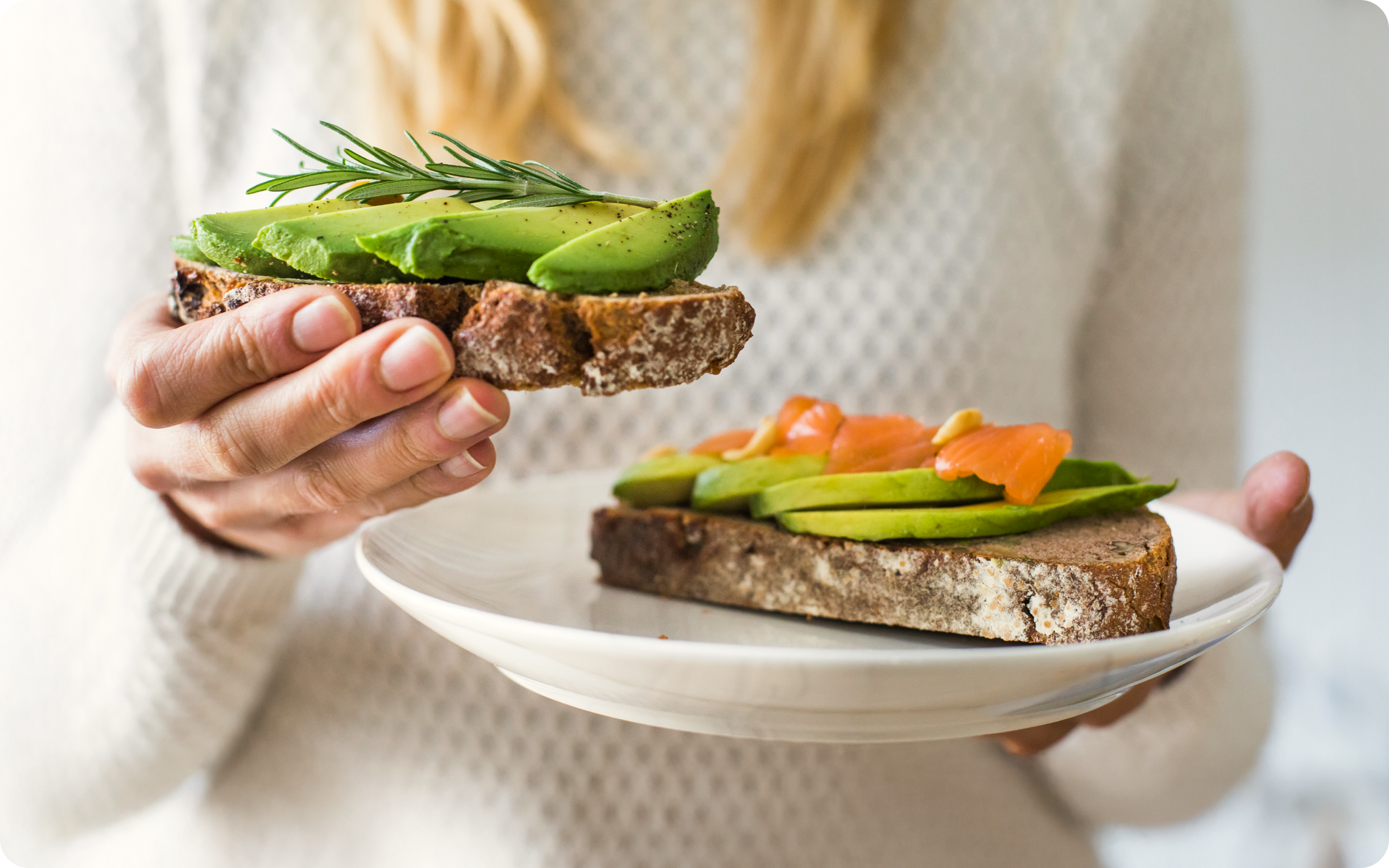Is Kimchi Keto Friendly? Learn How To Fit Within Your Carb Limits And Satisfy Your Korean Food Craving All In One Blow
It feels great when you have finally found a diet that perfectly fits your preferences and goals. But sometimes, it may be challenging to follow all the requirements of that diet, especially if you are not sure if you are allowed to consume certain foods or not. It is extremely difficult if the food you are doubting is well-known for its health benefits, and usually is allowed in other diets. That is why, sometimes questions like: “is kimchi keto?” appear.
Get your personalized
meal plan!
What Is Keto?
The word Keto comes from the term “ketogenic”. The main principle of this diet is to reduce the intake of carbohydrates, in other words, it’s a very low-carb diet. You are to consume more calories from healthy fats and protein. Following a Keto diet, you should avoid sugar, soda, pastries, and white bread. Ketosis is a state when your body runs out of sugar and starts to burn fats in order to fuel your body with energy. The keto diet is a short-term process focused mainly on shedding pounds and is not recommended for a long period (11).
Benefits Of Keto Diet
Besides its weight-loss effects, this nutritional plan is packed with other potential health benefits (12, 11). For instance, it may:
- Improve heart health
- Alleviate symptoms of polycystic ovary syndrome
- Reduce the risk of certain cancers
- Help to control epilepsy seizures
- Improve acne
- Aid in a number of nervous system disorders
- Help to lower your blood sugar
Risks Of The Keto Diet
Despite its high efficiency in weight loss and numerous health benefits, a long-term keto diet may have certain harmful side-effects (12, 10):
- Kidney problems
- Liver problems
- Constipation
- Nutrient deficiency
- Fatigue
- Nausea
- Headaches
- Surplus of protein in blood
- Low blood sugar
That is why, people with certain health conditions should avoid the keto diet. So, if you suffer from eating disorders, pancreatitis or kidney disease, or if you are dependent on insulin, pregnant or breastfeeding, you should not incorporate keto diet into your nutritional plan.
What Is Kimchi?
For those who are into South Korean culture and cuisine, kimchi is touted as an inseparable symbol of Korea. And really, it is impossible to imagine a life in South Korea without kimchi. So, what exactly is it, and is kimchi keto?
Basically, kimchi is a fermented vegetable (5). There are different kinds of kimchi, made of different vegetables, such as napa cabbage, Korean radish, cucumber, eggplant, bamboo shoot, soybean sprouts, perilla leaves and lots of others. The most popular are the first two. Every Korean family has their own recipe for this traditional dish, that’s why the seasoning can vary greatly from one to another. Usually it includes garlic, ginger root, young green onion, chili powder, kelp, and salted seafood (8). Sometimes people add apples, pears, shrimps, anchovies, honey, fish sauce, and many other components to the seasoning.
Reasons why BetterMe is a safe bet: a wide range of calorie-blasting workouts, finger-licking recipes, 24/7 support, challenges that’ll keep you on your best game, and that just scratches the surface! Start using our app and watch the magic happen.
How Is Kimchi Used?
Usually it is served as a side dish, almost to everything. Some Koreans consider it to be one of the main ingredients while cooking an instant noodle soup – ramen. It also can be among the ingredients of such dishes as:
- Kimchi dumplings (kimchi mandu)
- Kimchi fried rice (kimchi bokkeumbap)
- Pancake (kimchi buchimgae)
- Kimchi stew (kimchi jjigae)
- Tofu kimchi (dubu kimchi)
- Kimchi Udon
Properties Of Kimchi
Due to the lactic acid bacteria (LAB), which is involved in the process of fermentation, this popular dish is filled to the brim with probiotics. 100 grams (3,5 ounce) of cabbage kimchi contain the following:
- 33,9 Calories
- 7g Carbohydrates
- 0,4g Fats
- 1,1g Proteins
- 0,3g Fiber
Besides that, it is rich in such vital nutrients as vitamins A, C, K, E, folate, sodium, potassium, phosphorus, calcium, magnesium, and others (8, 3). Due to all the nutrients, kimchi possesses antibacterial, antioxidant, anticancer, anti-inflammatory, probiotic properties, cholesterol reduction, and anti-aging properties (6).
Health Benefits Of Kimchi
All the properties of kimchi make its consumption highly beneficial for health (5). Here is how kimchi can add to your wellbeing:
-
Promotes Weight Loss
Kimchi contains a lot of nutrients and probiotics and is low in calories. It can be a great addition to your diet, and can help you slim down effectively. Studies show that it boosts the process of weight loss and helps to fight obesity (4).
-
Improves Gut Health
As kimchi is rich in probiotics it can improve your metabolism, digestive processes and intestinal microflora balance. Probiotics add to the good bacteria in the lining of your intestines and prevent gut inflammation and other intestinal problems (9, 1).
-
Has Anti-Atherosclerotic Effects
A research conducted by Korean scientists shows that kimchi possesses anti-atherosclerotic effects, due to its lipid-lowering, antioxidant and anti-inflammatory activities (2).
-
May Reduce The Risks Of Type 2 Diabetes And Heart Disease
One more benefit of kimchi’s anti-inflammatory effect is that it could help to prevent various serious diseases, such as type 2 diabetes and heart diseases. Research shows that regular consumption of this dish significantly decreases blood sugar and total cholesterol, high levels of which adds to the risk of the previously mentioned diseases (7).
Is Kimchi Keto?
And now, with all the provided keto and kimchi information, the main question is: is kimchi keto? As you already know, kimchi is a great choice for weight loss. It is rich in nutrients and probiotics, and low in calories. However, it may be confusing whether this Korean side dish fits into keto diet standards. Although most of its calories are from carbs, kimchi is relatively low in them, which means that you can consume it without knocking yourself out of ketosis. However, it is better to consume homemade kimchi, as certain brands may add extra carb-rich components, including sugars.
Read More: 30 Day Keto Challenge: Will Upping Your Fat Intake Help You Lose Weight?
How To Make Keto Friendly Kimchi At Home?
You can buy ready-to-eat kimchi at the store, or order it on the internet, but if you want to, you can make it yourself. Making kimchi steals quite a lot of time, so people usually make it at once in big amounts. The following recipe is for one big jar of kimchi. You can modify the recipe by substituting some of the Korean ingredients. You can also adjust the spiciness, by adding less chili pepper flakes, to make it milder, or more to make it hotter. So, without further ado, here is how to make traditional kimchi at home:
Ingredients:
- One large napa cabbage or two smalls
- One cup of Korean coarse sea salt
- Five cups of water
- One pound (half of a kilogram) of a Korean radish
- Half of a Korean pear (optional)
- Half of an apple (optional)
- Four scallions
Seasonings:
- One tablespoon of glutinous rice powder
- Half of a cup of Korean red chili pepper flakes
- ¼ cup of minced salted shrimp
- 4 minced raw shrimps
- Three tablespoons of fish sauce
- Three tablespoons of minced garlic
- One teaspoon of minced ginger
- One teaspoon of sesame seeds
- Half of a cup of water or dried kelp broth
Instructions:
- Mix one tablespoon of glutinous rice powder with half of a cup of water and simmer over low heat until it thickens to a paste, then cool.
- Cut the cabbage vertically in half. Cut the halves the same way, to make quarters, without cutting off the cabbage leaves.
- Pour the water in a large bowl and add half of the cup of salt. Stir it until the salt dissolves completely. Take a quarter of a cabbage and carefully, but thoroughly bathe it in the salty water. After that shake off the excess water that is left on the leaves back into the bowl and put the quarter into another bowl. Repeat this action with all four quarters of the cabbage.
- Take the half of the salt that is left and generously sprinkle the thick white part of every leaf. If you still have a quarter of cabbage left, but almost or completely run out of salt, take some more, to finish the salting process. Lightly pour the remaining salty water from the previous bowl over the quarters. Set the bowl aside for 6-8 hours and switch the cabbage quarters from bottom to top every 2-3 hours.
- When the white parts of the leaves bend easily, take the cabbage and rinse it thoroughly three times. After that drain it well.
- In the meantime, prepare the broth for the seasoning. Boil dried kelp in one cup of water and let it cool down.
- Mix the minced garlic, ginger, salted shrimps with the rice paste and kelp broth, and all the other ingredients of seasoning. Set aside, until the red pepper flakes dissolve a bit.
- If you are using apple and pear, chop them with radish into matchsticks. Put it all in a big bowl and add the prepared seasoning. Mix it using your hands. Diagonally cut the scallions into 1-inch pieces and add them in. Mix thoroughly. Taste it, if it is not too salty for your taste, add more salt, fish sauce or salted shrimps. Leave it for 30 minutes.
- Take each quarter and cut off the thick stem parts, leaving enough to hold the leaves together. Take a quarter and put it into the bowl with seasoning mix. Spread the seasoning over each leaf, so that you have enough for each quarter. Repeat the process with the other three quarters.
- Fold the leaves over toward the stem and wrap it with the outermost leaf. Put it in a jar or airtight container. When all the cabbage quarters are in, press down to remove the air pockets. Rinse the seasoning bowl with half of the cup of water and pour it over the kimchi.
- Leave it at room temperature for two days, and then store in the fridge. Your delicious homemade kimchi is ready!
Conclusion
There are lots of diets that focus on shedding pounds. The low-carb keto diet is one of them. Besides its weight loss effects, it has a lot of potential health benefits, if followed for a short period. And, on the other hand, there is kimchi – nutrient-rich, low in calories, packed with probiotics Korean fermented vegetables. Numerous studies showed that regular consumption of this side-dish can significantly improve your health. However, most of its calories come from carbs. So, is kimchi keto? Yes, it is, but make sure to check the label for the amount of carbs when you buy it, or even better – make it yourself at home.
DISCLAIMER:
This article is intended for general informational purposes only and does not address individual circumstances. It is not a substitute for professional advice or help and should not be relied on to make decisions of any kind. Any action you take upon the information presented in this article is strictly at your own risk and responsibility!
SOURCES:
- 10 ways to improve gut health (2019, medicalnewstoday.com)
- Beneficial Effects of Kimchi, a Korean Fermented Vegetable Food, on Pathophysiological Factors Related to Atherosclerosis. (2017, ncbi.nlm.nih.gov)
- Biochemical, microbiological, and nutritional aspects of kimchi (Korean fermented vegetable products). (1994, ncbi.nlm.nih.gov)
- Fermented kimchi reduces body weight and improves metabolic parameters in overweight and obese patients. (2011, ncbi.nlm.nih.gov)
- Health benefits of kimchi (Korean fermented vegetables) as a probiotic food. (2014, ncbi.nlm.nih.gov)
- Kimchi and Other Widely Consumed Traditional Fermented Foods of Korea: A Review. (2016, ncbi.nlm.nih.gov)
- Kimchi, a fermented vegetable, improves serum lipid profiles in healthy young adults: randomized clinical trial. (2013, ncbi.nlm.nih.gov)
- Napa Cabbage Kimchi (n.d., nutritiondata.self.com)
- Prebiotics, probiotics and your health (2019, mayoclinic.org)
- Should you try the keto diet? (2018, health.harvard.edu)
- What’s a Ketogenic Diet? (2019, webmd.com)
- Why is the keto diet good for you? (2020, medicalnewstoday.com)













